More Than Meets The Eye
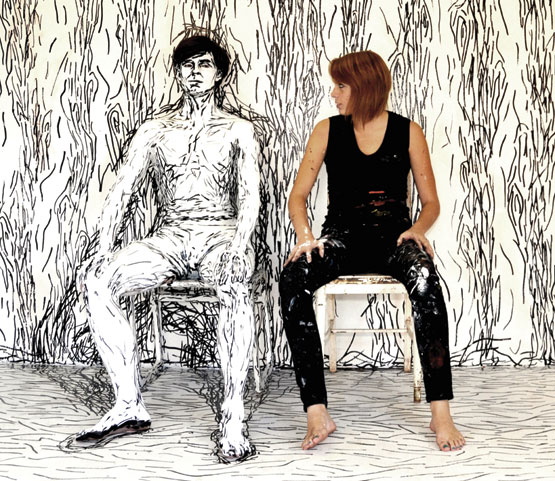
Take in a photographic print of one of the latest pieces by artist Alexa Meade ’09. Scan over it. Absorb it. Digest it. Notice, especially, the eyes of the subject, the gaze. It’s as if he or she is staring straight at you, really staring at you. Then, just maybe, have the realization so many others have had: It’s an actual person, not a painting … except that it also is a painting. Wait, what?
It’s that incredulity that has catapulted what the Washington Post has called Meade’s “shotgun art career.” She’s been deluged of late with media inquiries and gallery invitations. What’s all the buzz about?
Meade applies modified acrylic paint directly on the flesh of her models, turning people into paintings. She paints their clothes and the backdrop, too, then photographs the scene. The result is a curious case of art imitating life. Or is it the other way around?
It is a radical reversal of trompe l’oeil, the artistic optical illusion whereby objects and scenes in a two-dimensional painting appear to be three-dimensional. By painting directly onto her subject and background and then taking a photograph, she tricks the eye into perceiving a flat, two-dimensional canvas.
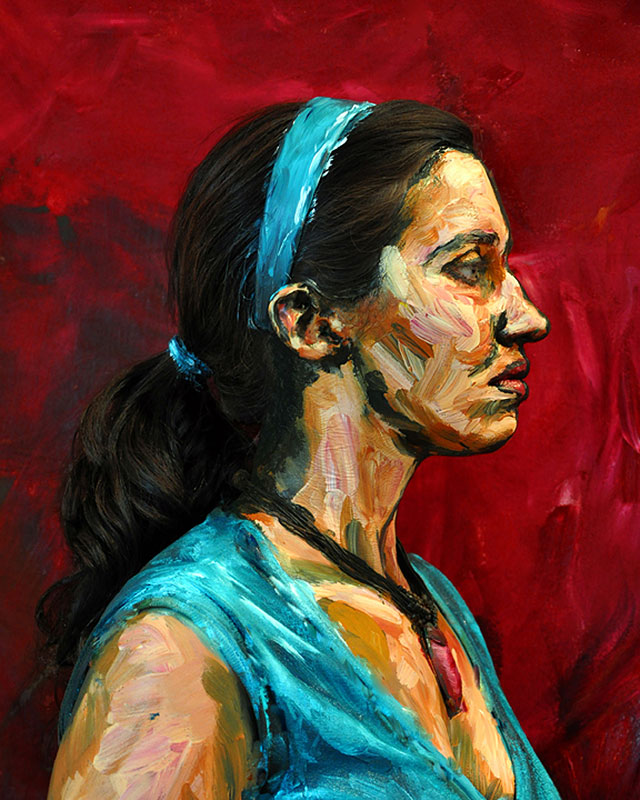
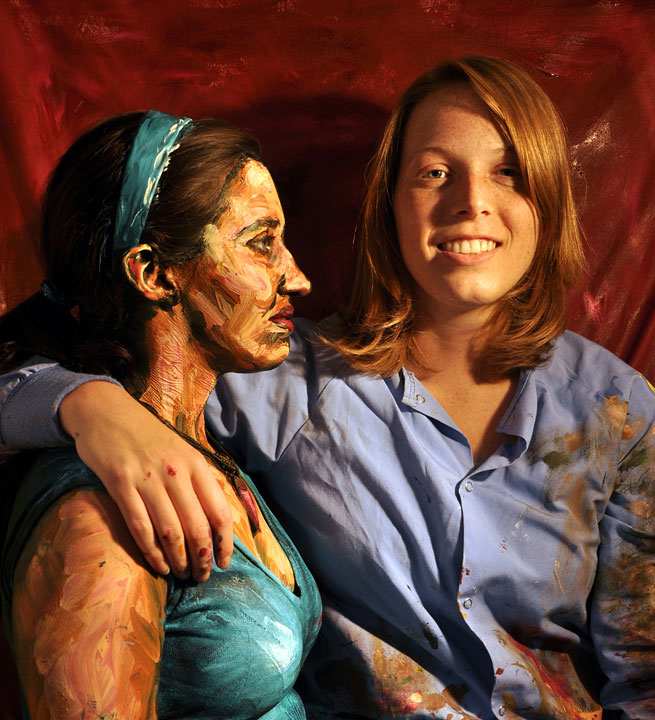
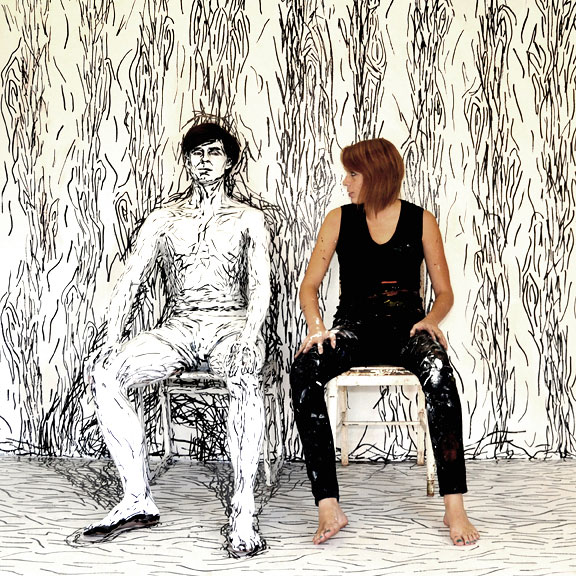
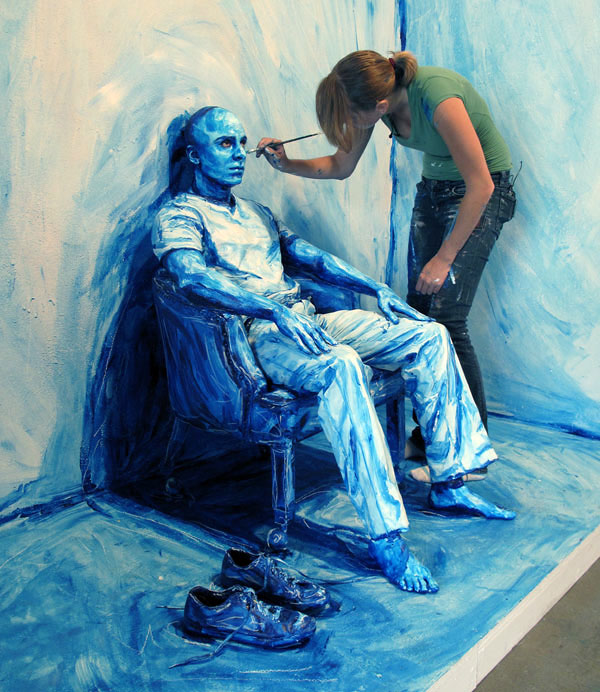
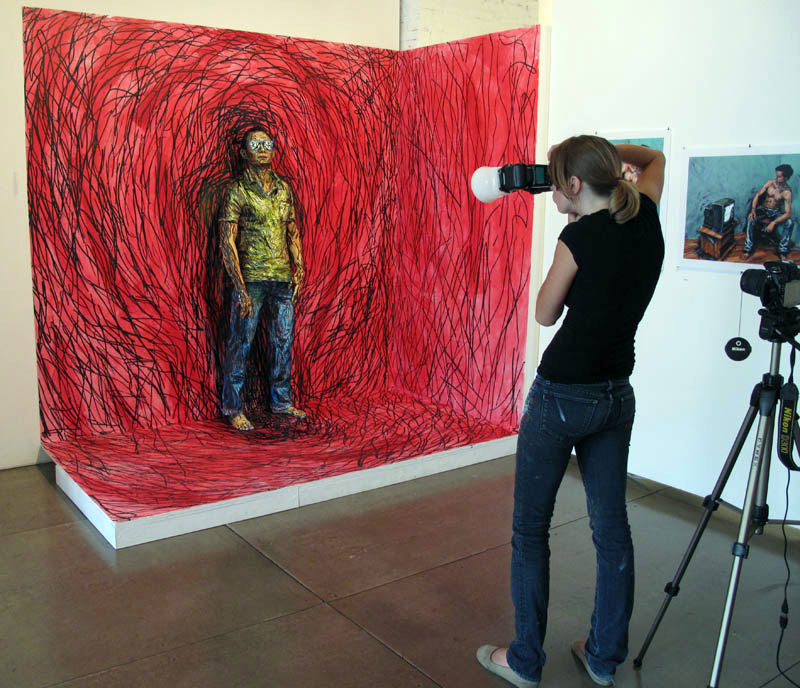
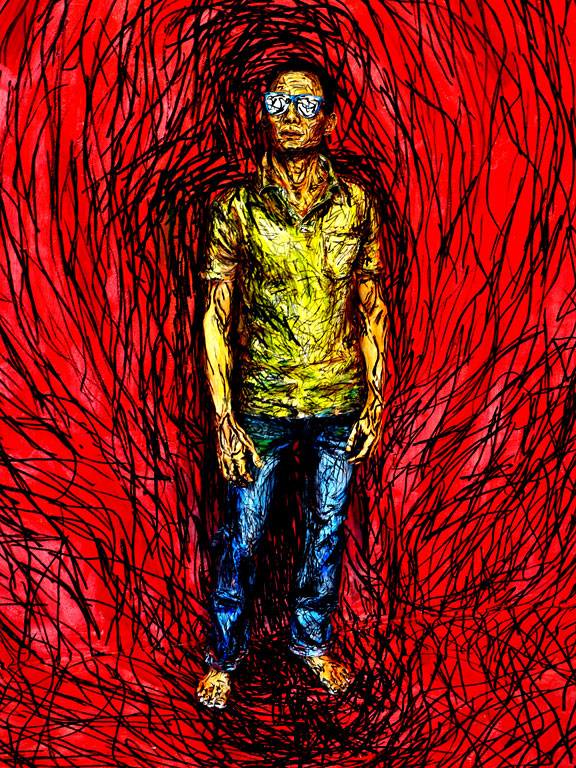

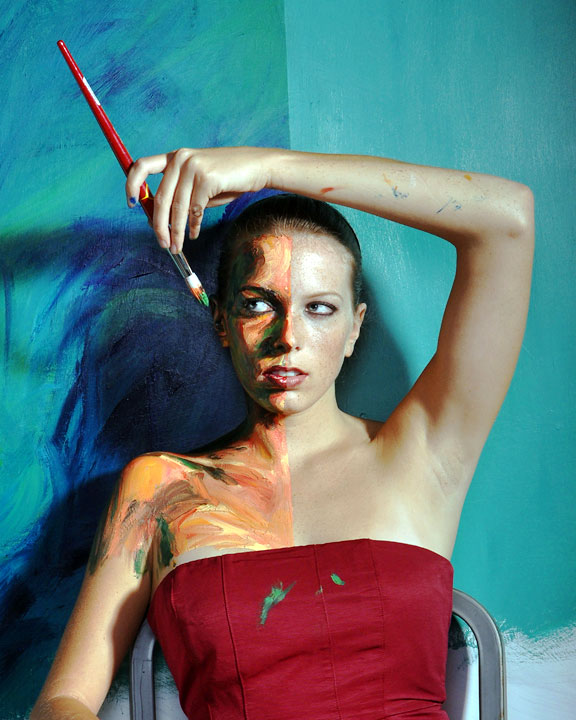
“It’s something new, and people aren’t quite sure how to approach it,” says Meade. “It can take some explaining, especially when it’s just the photo prints on exhibit. People walk by like they would a normal painting, walking slowly, with their head turned; they pause for a moment, then keep walking. I get a kick out of that. It’s so far outside their experience, they don’t know that there is something to question.”
The effect is surprising, jarring, amusing, unexpected. This is especially true when the viewer is at a live installation and locks eyes with a painted model. “It’s not often a painting can stare back at you,” says Meade. “There’s a voyeuristic interest, and also a return of the gaze.”
The artist’s work grew, strangely enough, out of her time as an intern for the Obama campaign during her Vassar years. She spent time on Capitol Hill, as well as in Denver leading up to the 2008 Democratic National Convention. The experience working with candidates and campaigning taught her about “repackaging material,” she says. “I became interested in how the way you frame things—the context they’re put in—changes the way they’re perceived, how it can become all about the surface,” she explains. “I thought, ‘What if I take something—a person or a space—and place a reinterpretation on top of it?’ It alters the way we view the source text. It becomes a representation of a person.”
Meade credits her education at Vassar with helping her take her art in the direction she has. “I’m able to break down what we’d traditionally expect from painting and art, and put this different spin on it,” she says.
Each piece takes some 20 to 40 hours. Meade says she prefers to paint subjects in their home or a space of their choosing. A familiar environment becomes an important “signifier of who they are,” she says.
Meade was first “discovered” on Kottke.org, a popular Manhattan liberal arts blog in 2010. Since then, she has been linked to, blogged about, Tweeted, Digged, Pinned, and otherwise covered in the Atlantic, on CNN, and even on Al Jazeera English.
She has even created a stir in the worlds of commerce and fine arts. Mercedes-Benz recently asked her to paint over one of the company’s cars, transforming a new C-Class coupe into one of her surreal creations. And some fine art critics have gone so far as to suggest she’s advancing the ancient genre of portraiture.
But Meade may be most amused by a more mundane credential. “Alexa Meade” is now an official entry on Wikipedia. “It’s kind of funny,” she says. “I’ve had a lot of different media outlets cover me. But what gets people going is, ‘Yeah, but you’re on Wikipedia!’”
